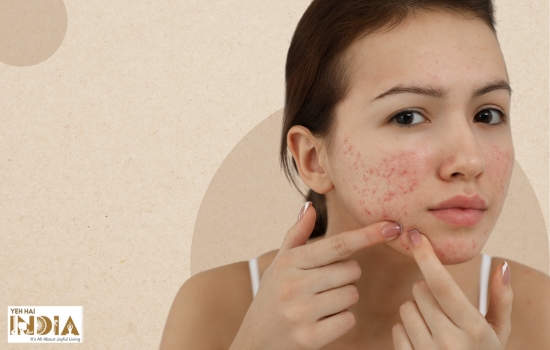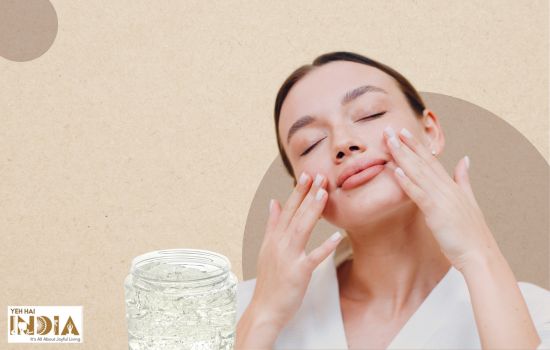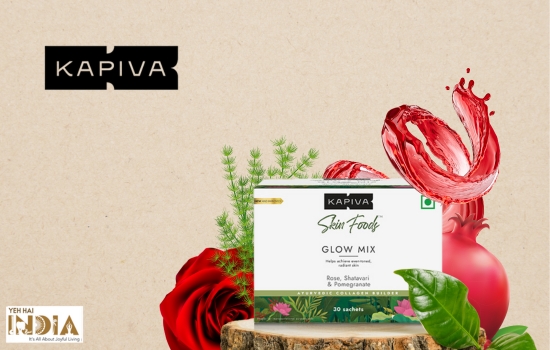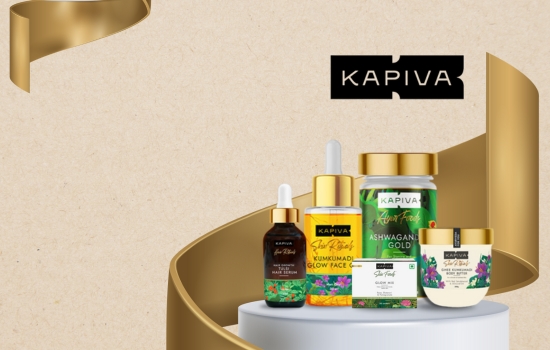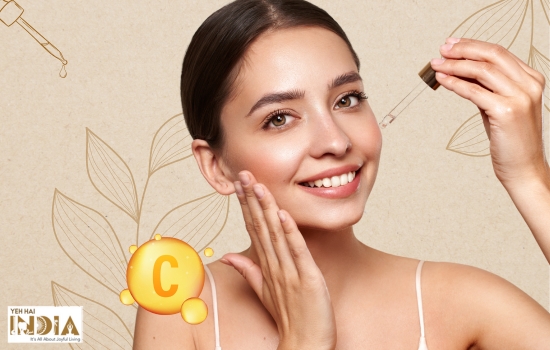When you develop a bout of acne, it becomes next to impossible for your skin to heal and become clear again. For this reason, it is vital to eliminate the cause of acne before attempting to seek treatment for acne scars.
At home, cures might seem easy to lighten the appearance of scars but they come with a risk of your pores getting inflamed if you unknowingly incorporate ingredients that fail to suit your skin type.
Treatment Overview
Speaking of the treatment options available for the removal of acne scars, the ones that work either employ chemicals or rely on invasive procedures such as laser therapy, cryotherapy, etc.
If you are unwilling to tread that path, it’s best to switch to natural methods that work just like chemical peels.
Going for spot treatments for acne scars with masks enriched with natural scar-removing agents like salicylic acid, glycolic acid, hyaluronic acid or lactic acid can help you attain a speck-free skin.
The best thing is these ingredients are found aplenty in fruits and dairy items and your skin can benefit greatly if you only increase the consumption of such foods.
In case, you’re seeking quicker results, topical application of foods rich in alpha hydroxy acids lets your skin draw in the nutrients easily to help itself recover from acne scars.
Before we dig deeper to know the natural methods proven to eliminate acne scars let us first know in detail the different types of acne scars and the type of treatments they are likely to respond best to.
Types of Acne Scars
Acne is a pretty troublesome condition more specifically for the younger lot. It not only harms physical attractiveness but also wreaks havoc on a person’s self-confidence and his/her ability to face the world.
The scars this condition leaves on the skin are of three kinds – Atrophic, Hypertrophic and Hyperpigmentation. For a better understanding of the causes of these three types of scars, it’s worth studying each of them in detail.
1. Atrophic Scars
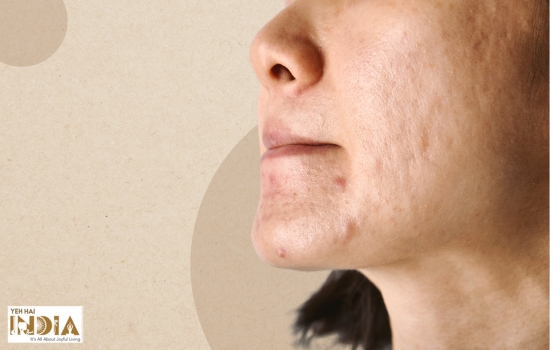
A large percentage of acne sufferers are likely to develop atrophic scars due to impaired skin regeneration and destruction of collagen that results from inflammation accompanying acne.
Based on their appearance, shape and texture, these scars are further classified into three different forms:
i. Rolling scars
Rolling scars are tiny indentations on the skin’s surface that form as an outcome of skin healing that takes place post-acne. These scars measure around 3 to 5 mm and are oval with a pointed end.
The treatments recommended for rolling scars range from microneedling, and microdermabrasion to laser therapy and chemical peels which help reduce the unevenness of these scars to a great extent, leading your skin to look smooth and even textured once again.
Dermal fillers are employed for scars that refuse to heal with the above treatments. These fillers infuse collagen into the scarred regions to trigger the formation of new skin beneath the indentations.
ii. Icepick scars
This one is the most dreaded form of acne scars due to their ugly appearance. They look like your skin has been pricked several times making it look rough and uneven. The worst thing is the pricks are deep enough to resist any kind of peeling or exfoliation that is likely to bring relief from the scarring.
These scars generally form after an occurrence of cystic acne that takes a wee bit longer to heal than normal acne.
The treatments enlisted include invasive procedures such as punch grafting, wherein new skin is grafted to replace the pricked areas; punch excision which includes surgical removal of scars; and laser resurfacing carried out in several sittings to gently lift away scarred skin.
iii. Boxcar scars
These scars are somewhat similar to icepick and rolling scars but the difference is noticed only on close inspection. When examined closely, they appear to be tiny depressions, larger than icepick scars but smaller than rolling scars.
A telltale symptom that discerns Boxcar scars from the other two scars is the redness or inflammation they accompany.
The scars mostly originate due to non-adherence to treatments prescribed for severe acne. These scars are the most possible outcome that takes a great deal of effort to get treated, once they begin to form.
Treatments for this particular condition are mostly invasive such as dermabrasion, microneedling, chemical peels, punch excision and laser resurfacing.
2. Hypertrophic Scars
Also termed Keloids, hypertrophic scars are characterized by a collection of skin tissue that turns into papules or nodules on the site of acne.
This type of scar forms due to the overproduction of collagen which sometimes takes place as a hurried response to acne inflammation.
These scars not only ruin skin texture but also tend to inflict irreversible harm to your skin, leading it to look aged and saggy.
Medical procedures such as cryotherapy, laser therapy and corticosteroid shots aim at preventing the growth of these scars and destroying any excess tissue.
3. Hyperpigmentation Marks
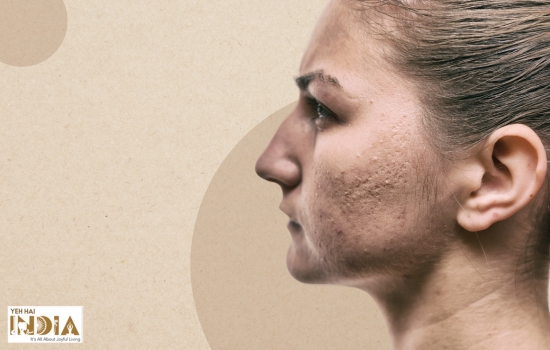
In some cases, acne sufferers often find their skin pigmented on acne regions. This happens due to the wound-healing process that takes place as a natural response to acne inflammation. The pigmentation appears on targeted regions as pink, red or brown spots.
Treatment for the discolouration resulting from acne happens in two stages:
i. Protection
Use of sunscreens, sunblocks and sun filters is recommended to prevent the pigmentation from becoming worse. This helps control melanin release and keeps the acne-inflicted skin protected from any chance of discolouration.
ii. Removal of discolouration
Procedures like dermal exfoliation, laser therapy and skin-lightening treatments are roped in to eliminate discolouration on the skin, in case the marks fail to disappear on their own.
10 Natural Remedies to Treat Acne Scars
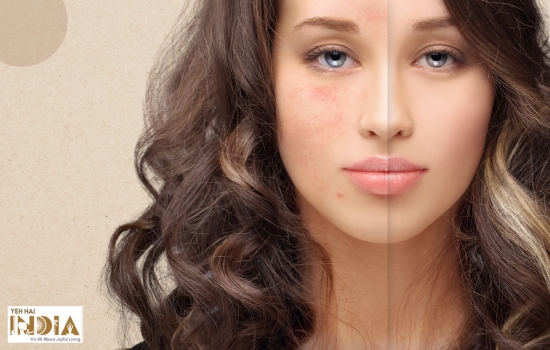
Achieving clear, radiant and scar-free skin after you suffer from acne scars might seem a distant dream. But if you follow natural methods consistently, you can certainly find relief from the scars after a certain length of time.
Adopting natural remedies is safer than most invasive treatment options that can do more harm to your skin than any of the benefits they might deliver.
Here we bring to you some time-tested recipes that can deliver freedom from acne scars:
1. Pineapple Juice
A great source of skin-rejuvenating Alpha Hydroxy Acids, Vitamin C and bromelain that help clear up acne lesions, marks or scars, pineapple juice is your saviour when your skin fails to look clear and bright.
It acts as a mild exfoliant to ebb away skin cell deposits or pigments and in turn, helps you attain skin that’s smooth and youthful.
2. Apple Cider Vinegar
A miracle remedy that can clear up scars in just a few weeks, ACV works to neutralize pH levels and quickens skin renewal to help scars heal quickly without any disruptions.
With its natural bleaching qualities it helps lighten dark spots and pigmentation and also prevents any further inflammation in pores that might erupt right after acne has healed.
3. Baking Soda
Widely known for its skin-purifying nature, baking soda can work wonders in achieving a clear, pore-free look. For acne scars, it is a wonderful brightener that clears up and heals scarred skin with weekly application followed for 6 – 8 weeks.
It not only lightens scars but also maintains healthy pH levels to keep acne inflammation at bay. If you notice your skin to be dry post the application of baking soda, apply a squalane-infused serum to help maintain requisite levels of moisture and sebum to keep your skin hydrated and supple.
4. Turmeric
Turmeric stores countless benefits for the skin. It detoxifies pores, quickens cell repair and provides respite from discolouration and patchiness.
You can ensure recovery from acne and its effects such as scars, redness or roughness with regular use of a turmeric mask or face pack.
Pair it with honey to curb any possibility of bacterial growth in pores when your skin is recovering from acne.
5. Oatmeal
For acne scars, oatmeal proves to be a magical remedy that clears up pigmentation with its cleansing properties.
What’s interesting about this wonder skinfood is its superb ability to manage skin sensitivity, irritation and itchiness. When mixed with milk or yoghurt, it releases a fluid that’s rich in saponins, an agent known to cleanse skin without disrupting its natural barrier.
Using an Oatmeal soap is another way to derive its scar removal benefits, especially on skin that doesn’t respond well to irritating exfoliants or scrubs.
6. Honey
Honey is particularly beneficial in warding off bacteria that are likely to settle in skin pores to cause acne. For scars, it is a potent source of AHA glycolic acid that helps reduce their appearance with consistent use.
You can mix honey with ground oatmeal and use it to scrub away scars. The scrubbing action triggers cell renewal to take place at a much quicker pace, leading your skin to become clearer and free from marks.
7. Cucumber Juice
Cucumber juice lets your skin derive all the nutrients it needs to quicken scar healing like salicylic acid, often used in chemical peels to lighten scars.
As a mask or scrub, fresh cucumber juice lifts away dead tissues in the gentlest way possible.
This juice cleanses pores, nourishes the skin and helps stabilize the skin’s normal functions including melanin formation to manage pigmentation that happens due to the healing of acne.
8. Jojoba oil
Employing Jojoba oil in your daily face massage ritual channels blood flow to the surface of the skin, thereby helping your skin get rid of its scarred appearance.
Pairing a massaging ritual with skin exfoliation carried out using natural scrubbing agents like oats and AHA-rich fruits yields results quicker and makes your skin glowy and scar-free.
With this two-step remedy for acne scars, the skin starts healing normally and scarred areas begin to disappear on their own.
9. Yoghurt
Rich in lactic acid, it helps regulate melanin formation and gently sloughs off dead tissues on scars to reveal scar-free skin. Combine it with natural exfoliants like oats, and turmeric to attain scar healing.
10. Lemon juice
The simplest and most widely practised cure for scars is lemon juice which does seem to work on acne scars better than any store-bought depigmentation potion.
Together with substances rich in lactic acid such as yoghurt and milk, lemon juice works to fight pigmentation and dead tissue buildup and leaves your skin brightened.
However, caution must be exercised to prevent any chance of inflammation that might appear in certain instances. If you routinely develop redness post-application of lemon juice on the skin, diluting the juice with aloe gel or rose water might help.
Recommended Article: Acne Scar Gel: Unlock Clearer Skin with Our Top Picks
Frequently Asked Questions
Q. What are acne scars? How to identify acne scars?
Acne scars are the outcome of acne that leads your skin to become scarred on regions where acne exists as pimples, whiteheads, or inflamed pores. These scars stay on the skin for a long time and in some cases, they become a part of it.
They can be identified by the way they appear. Some scars look like brown spots, while some may look as if the skin has been pricked, and some others might exhibit signs of tissue damage that give them the appearance of depressions or incisions.
Q. Are natural remedies better than medical cures for acne scars?
If you want your acne scars to heal without any chance of premature ageing or skin sagging that most chemical treatments bring with them, natural remedies are for sure a better option to reduce the appearance of scars. They might take a long time to work, but the fact that they come with minimal risk is a reason that goes in favour of natural scar removal treatments, rather than invasive procedures.
Q. Do natural remedies provide relief from the skin damage caused by acne?
Natural remedies do provide relief from this condition. But only if they are followed consistently, as recommended by a natural skin care expert. Complete recovery is rare in the case of atrophic and hypertrophic scars, but the remedies enlisted can help minimize the appearance of these two types of scars, to some extent.
It’s very important to treat acne scars at the right time as any kind of delay can make them unmanageable like in hypertrophic scars where the scars take the shape of nodules. This can only lead to utilizing invasive therapies such as cryotherapy and excision.
Q. Are natural remedies for acne scars safe?
To know whether a natural remedy is safe for your particular skin, it is advisable to do a patch test. Even then the chance of any ill-effects cannot be completely ruled out. If your skin shows any negative symptoms such as redness, irritation or inflammation after using a particular ingredient, discontinue its use altogether and see a dermatologist.
Q. When should you see a dermatologist to treat acne scars?
If you notice soreness or inflammation that refuses to heal on its own on scarred regions, a visit to a dermatologist might give you a better understanding of your condition. When seeking treatment, get information on natural alternatives to stay safe from the harsh effects of chemical peels and other invasive therapies.


